Gliding l LW sound-picture match. For example substituting all sounds made in the back of the mouth like k and g for those in the front of the mouth like t and d eg saying tup for cup or das for gas.
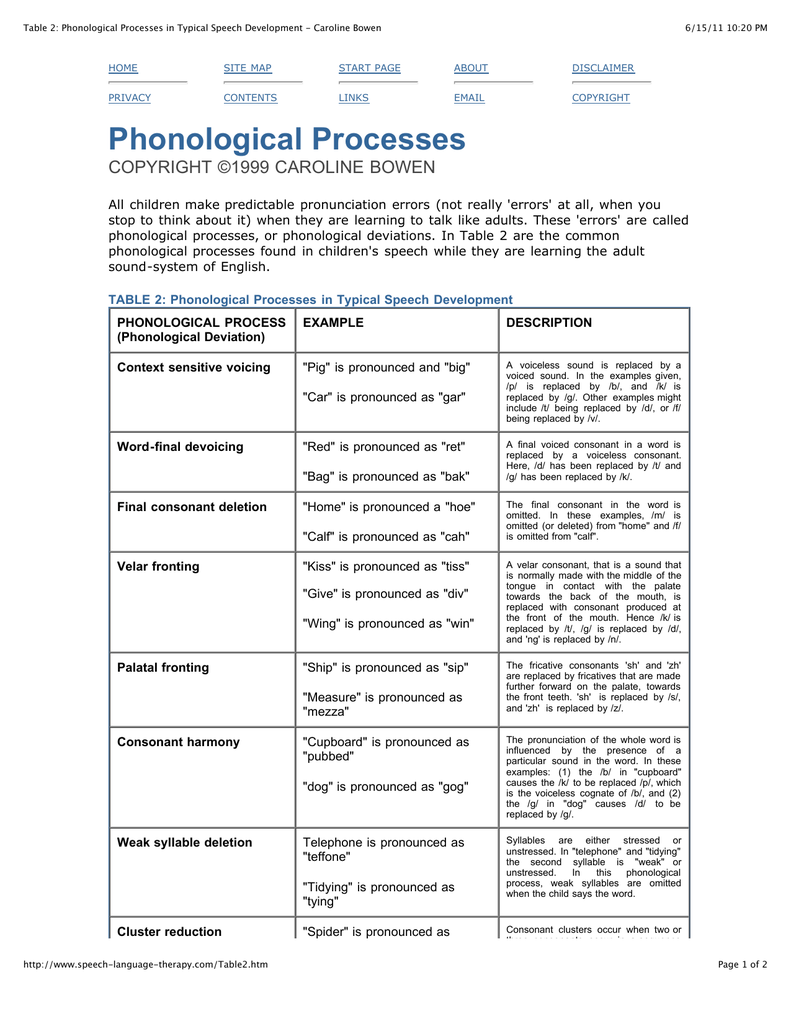
Phonological Processes In Typical Speech Development
Including s gone by 5 years Final consonant deletion When the last consonant of a word is omitted.

R to w phonological process. The process cannot occur in medial position. When r becomes a w and l becomes a w or y sound When an affricate like ch or j is replaced with a fricative. Please note that some children will never use certain processes.
This phenomena is recognized as a unique subset known as vocalic r vowel r or r-controlled vowel. 16 rows Selected Phonological Processes Patterns. For example telphone for telephone.
The r phoneme is an unusual sound. For example very young children ages 1 to 3 may say wa-wa for water or tat for cat Other children may leave out the final sound in words for example. When the r sound becomes w and l becomes y or w.
Phonological processes are the patterns that young children use to simplify adult speech. Red wed Yellow yeyow Unusual phonological errors. Gliding is the term used to describe a phonological process that occurs when someone replaces specific consonant with w or y.
Common Phonological Processes This list is not exhaustive. Age process should be eliminated by. Processes that disappear by age 3.
RW minimal pairs hidden picture game. RW name initialfinal phoneme. RW fill in the missing sound.
Age process starts to fade out. All children use these processes while their speech and language are developing. Phonological Processes in Typical Speech Development PHONOLOGICAL PROCESS Phonological Deviation EXAMPLE DESCRIPTION.
A phonological disorder occurs when phonological. Phonological process Description Example Approximate age of elimination Cluster reduction When a consonant cluster is produced with only one consonant truck tuck slide side brown bown 4 years. Phonological processes or phonological deviations.
Irail may be pronounced wail. 1998 Developmental phonological disorders. In Table 2 are the common phonological processes found in childrens speech while they are learning the adult sound-system of English.
These materials target gliding. Phonological rules in English can be classified by the kind of process they involve. Iiplay may be pronounced pway.
Now that we know the basic norms for sound development we can take a look at the natural process that this development involves. There are different types such as replacement with liquids or fricatives but lets talk about liquids l and r with replacements by w. Phonological process that assimilates the point of articulation of a following obstruent in the phrase eg.
Yed or wed for red yion or wion for lion We made a packet with L-W and L-Y minimal pair words to bring attention to this phonological process. Here are the seven major types of phonological rulesprocesses with examples. U m pleasant te m pennies a.
B mire Au mp Mary shoul gNk go etc where the unassimilated pronunciations are difficult except in quite deliberate styles. Gliding is a phonological process that affects the r and l sounds. Sounds produced further front of the mouth such as t and d are replaced by sounds made towards the back of the mouth such as c and g.
This process is the latest to be eliminated from a childs speech in typical development and because of this as well as the involvement of the pesky r sound very complex in itself this phonological process can take longer to treat if delayed. Phonological processes are patterns of sound errors that typically developing children use to simplify speech as they are learning to talk. Stoel-Gammon Dunn 1985 Pena-Brooks Hedge 2007 Bowen C.
However in the post-vocalic position when r comes after a vowel after a e i o u it takes on vocalic properties. Its overwhelmingly categorized and treated like a consonant. Children with this phonological process substitute the r and l sounds with the w or y sounds.
I have added 18 more materials to the phonological process page. These are the most common phonological processes seen in normal speech acquisition These processes are usually seen in more severe phonological delays. A practical guide for families and teachers.
Gliding is a phonological process typically affecting r and l which are classified as liquids Its probably safe to say that anyone who spends much time around Standard American English-speaking children has observed this process first-hand and can think of several children who pronounce r and l as w my right leg becomes my. This process is almost always seen in combination with Gliding. RW create a sentence using both targets.
This is simply a list of more commonly seen phonological processes. When a phonological process persists beyond the typical age at which it should have resolved a child is said to have a phonological disorder or delay. Replacing one class of sounds for another class of sounds.
Stopping of Liquids The substitution of d for the liquid singletons l r. 1Gliding the substitution of a liquid sound typically letter l or r with a glide sound letters w y or j Examples. R RW sound-picture match.
Unstressed syllable deletionChildren will leave out the unstressed syllable. Gliding of Fricatives The substitution of glides w j or the liquid l for fricative singletons eg fw sl sj. A phonological process disorder involves patterns of sound errors.
Phonological Processes Phonological processes are patterns of articulation that are developmentally appropriate in children learning to speak up until the ages listed below. Assimilation phonological process in which a sound changes to resemble a nearby sound and can occur both forward and backward within a word or between words. Phonological Processes Phonological processes are patterns of sound errors that typically developing children use to simplify their speech as they are learning to talk.

Phonological Processes English Spanish Differences Bilinguistics
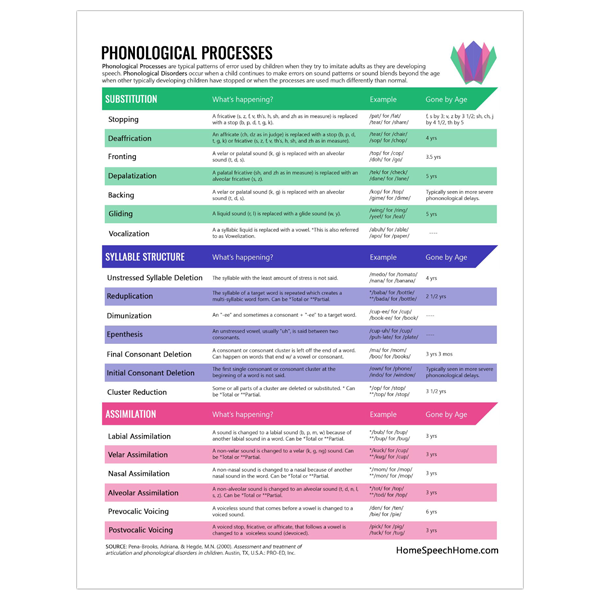
Phonological Processes Are Different From Articulation Disorders
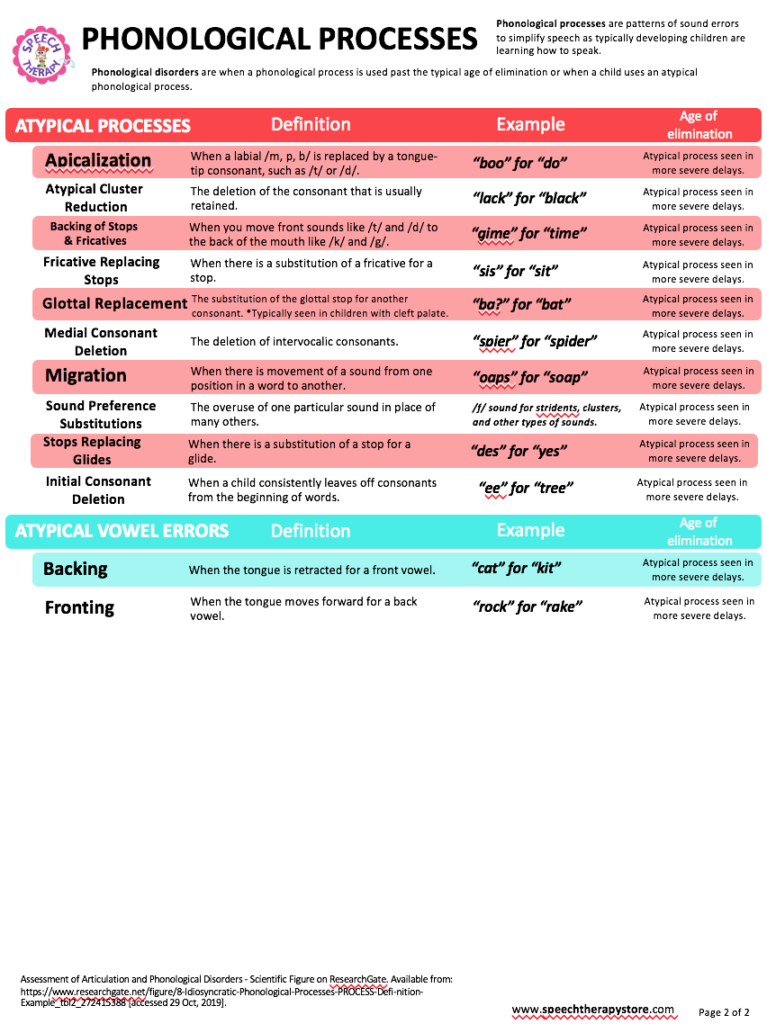
The Best Handout For Phonological Processing Disorder Therapy Speech Therapy Store

Phonological Processes Are Different From Articulation Disorders

Types Of Phonological Processes

Types Of Phonological Processes
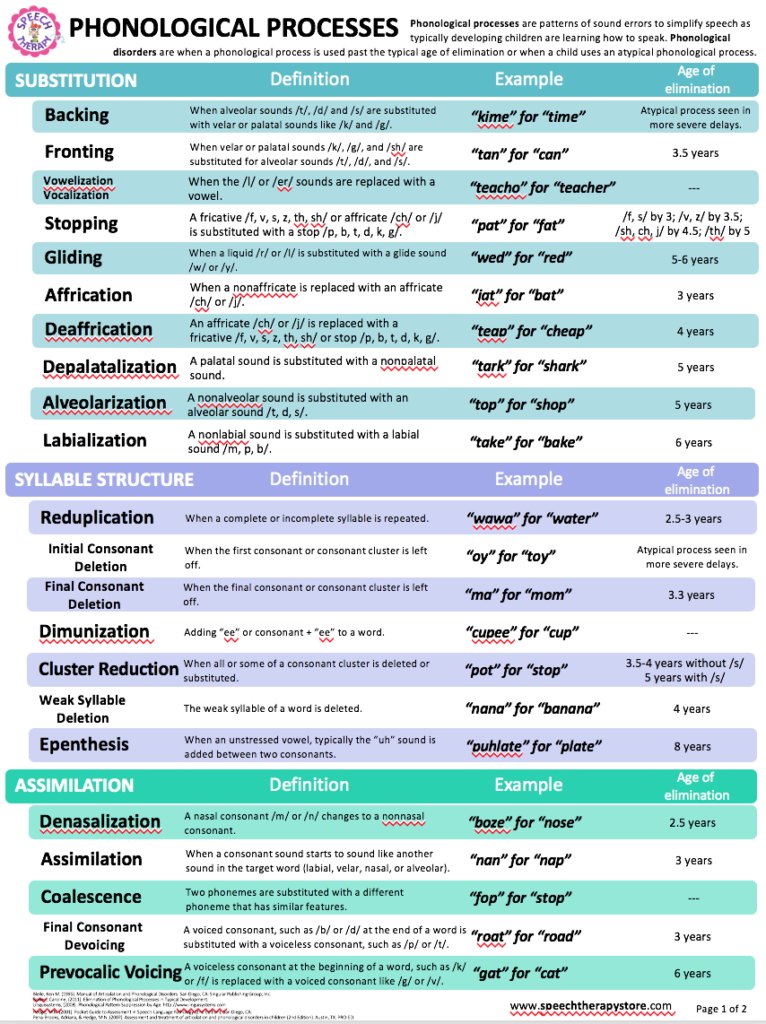
The Best Handout For Phonological Processing Disorder Therapy Speech Therapy Store

Phonological Processes In Swedish Download Table
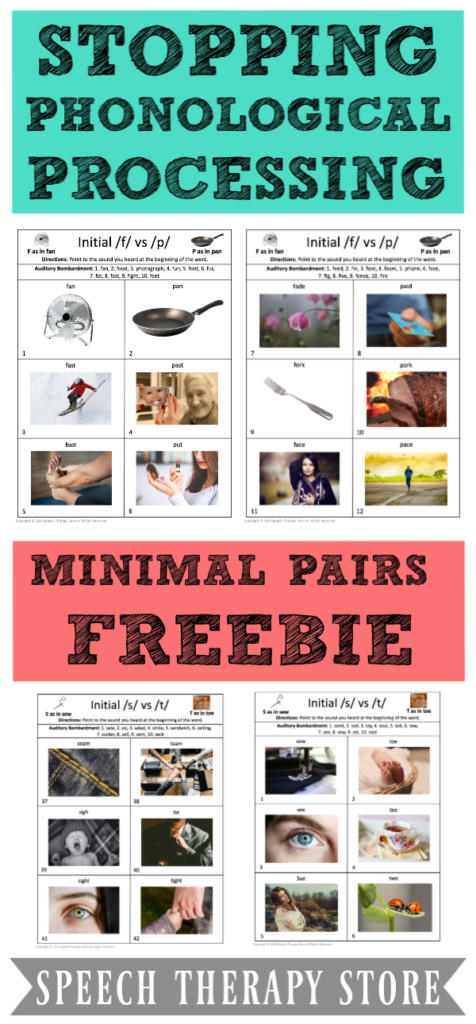
Stopping Phonological Process What Is It Free Worksheets Speech Therapy Store

Typical Phonological Process Development Chart
What Are Phonological Processes Mommy Speech Therapy
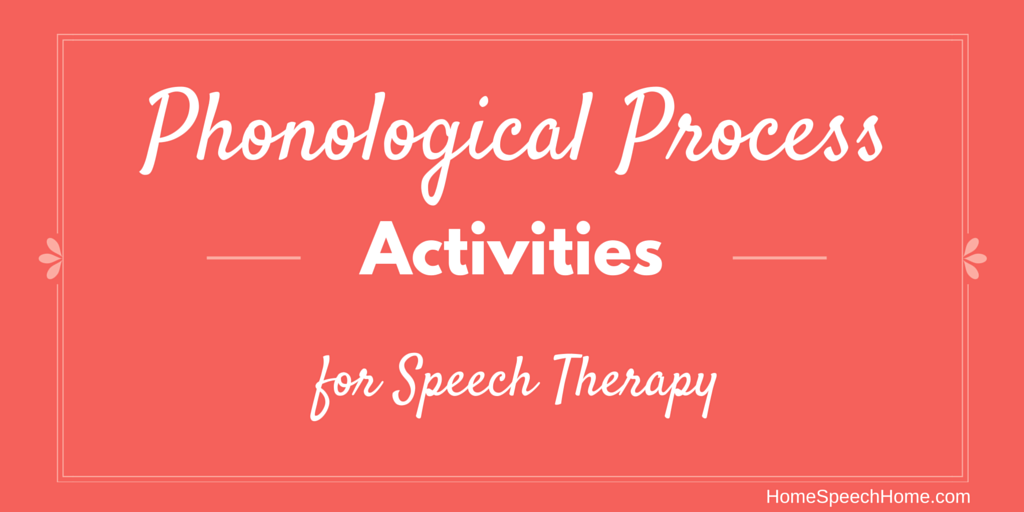
6 Phonological Process Activities For Speech Therapy
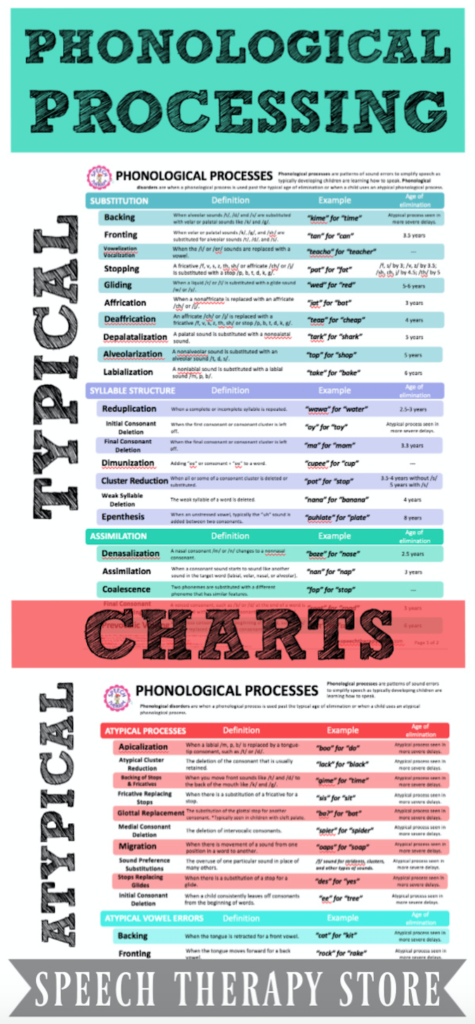
The Best Handout For Phonological Processing Disorder Therapy Speech Therapy Store

What Are Phonological Processes Answered Twinkl Teaching Wiki
Great Materials For Getting Rid Of Gliding In Speech Therapy
Top 5 Phonological Patterns In Children Treated By Slps Vox Lingue

Four Different Pages Are Included Combined Individual Speech Sounds And Phonological Process On O Speech Sound Development Chart Speech Phonological Processes

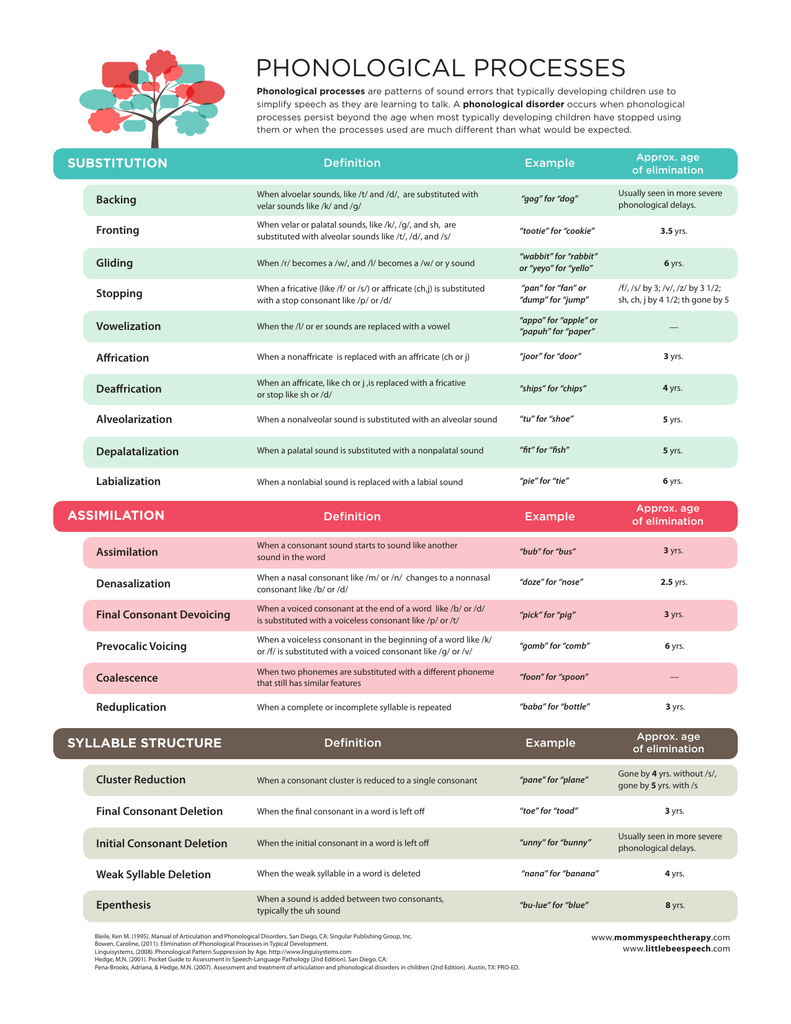
Post a Comment
Post a Comment